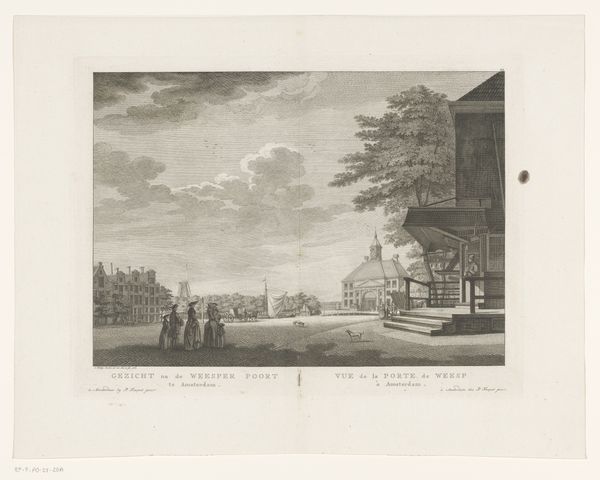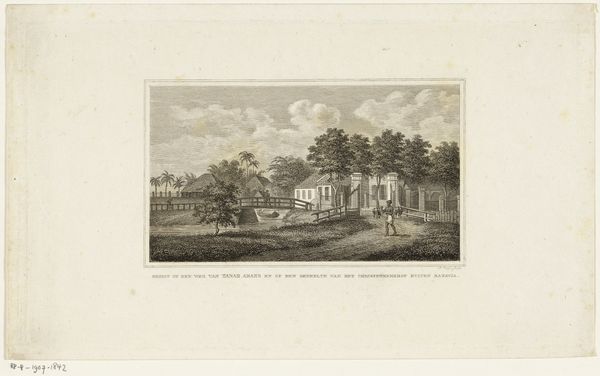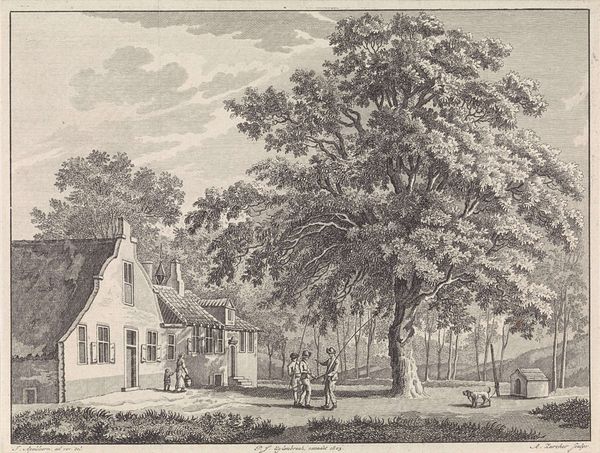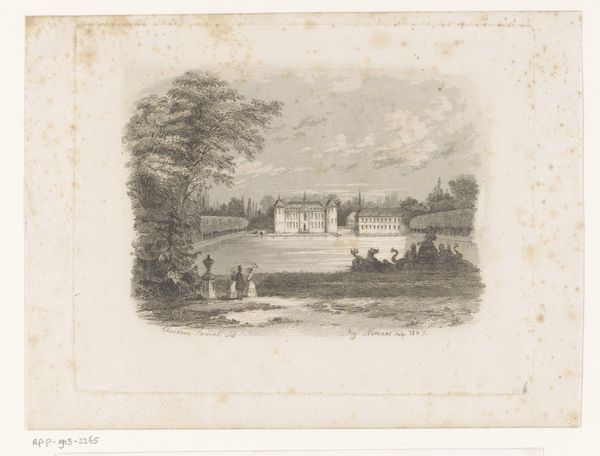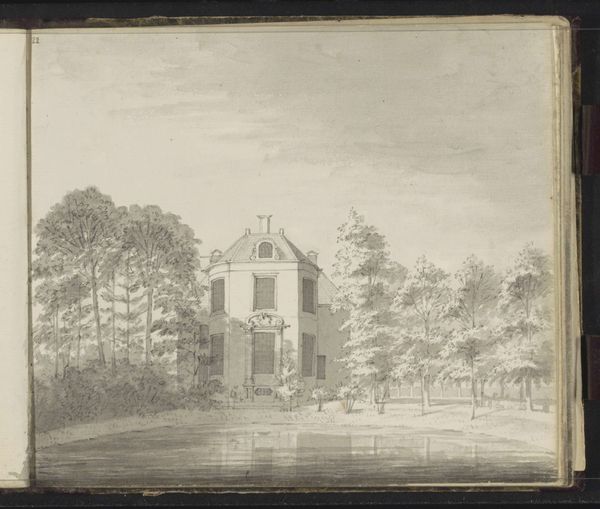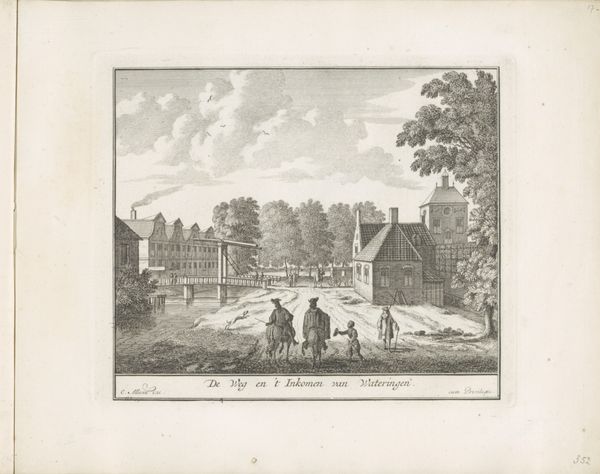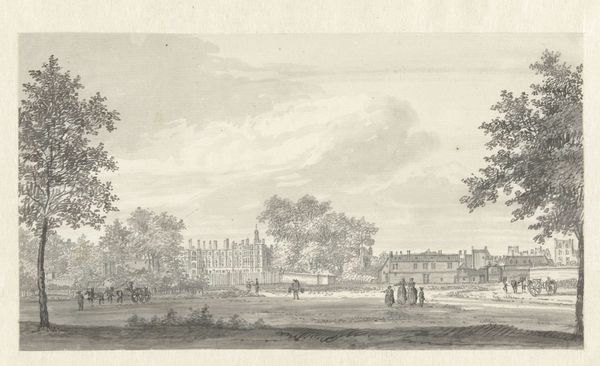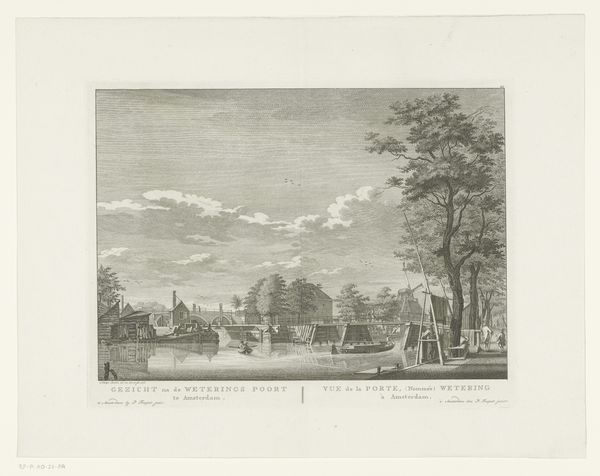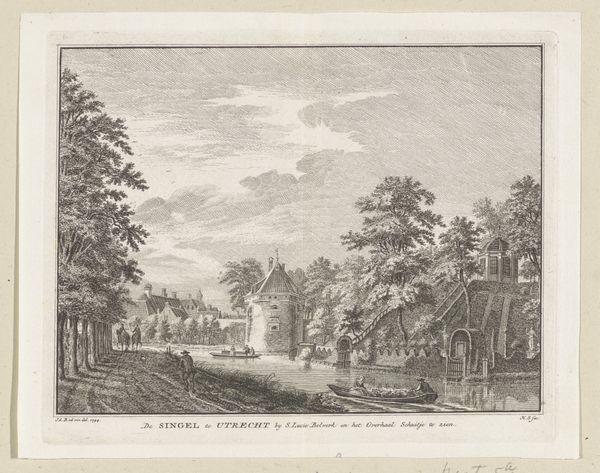
Dimensions: height 473 mm, width 600 mm
Copyright: Rijks Museum: Open Domain
Curator: This is Hermanus Numan's watercolor titled "Gezicht op de buitenplaats Zandbergen," likely created sometime between 1754 and 1820. Editor: It's immediately so peaceful, almost melancholic. The washed-out tones give it an ethereal, dreamlike quality, don't you think? Like a memory fading at the edges. Curator: Absolutely, and look at how Numan achieves that effect. He's working en plein air, likely sketching and painting on site to capture the light. The use of watercolor is key. Notice the thin washes, layered meticulously. The material fragility reinforces the delicate atmosphere. Editor: I’m curious about who exactly the individuals seated inside that small pavilion are. How might their socio-economic positions afford them such leisure time? Was it solely restricted to a particular demographic? How does the very act of observing the ‘outdoors’ or being in it tie to larger questions of identity and class? Curator: That’s an excellent point. It's hard to ignore the socio-economic context within which these landscapes are created and enjoyed. These paintings documented the privileges associated with land ownership and class divisions. The landscape as a commodity and signifier. Editor: It also has hints of what some scholars refer to as the Romantic Period with an almost performative sensibility. You can imagine, for those represented, how engaging in 'nature' was also to assert oneself politically within a specific matrix of power. What do you think of this, from an accessibility angle? It's located here at the Rijksmuseum, and as scholars we analyze it. But who is this artwork REALLY for? Curator: And I think what is so interesting about these landscape paintings is that they provide invaluable documentation on period building materials, horticultural practices, even down to the type of stones used to line pathways! So while you might consider those Romantic period sensibilities in practice, Numan has already captured and catalogued details surrounding materials from generations past. Editor: It makes me wonder, then, if we are perhaps as transient as this watercolor—a fleeting impression on paper. The artwork outlasts us, doesn't it? Curator: Precisely. The artist has passed, so it is upon us to continuously interrogate what art truly stands for through different lenses.
Comments
No comments
Be the first to comment and join the conversation on the ultimate creative platform.

